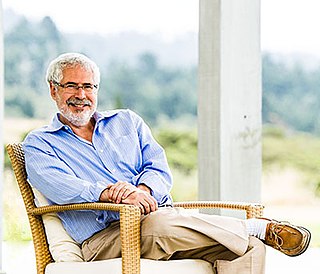Related Research Articles

In business theory, disruptive innovation is innovation that creates a new market and value network or enters at the bottom of an existing market and eventually displaces established market-leading firms, products, and alliances. The term, "disruptive innovation" was popularized by the American academic Clayton Christensen and his collaborators beginning in 1995, but the concept had been previously described in Richard N. Foster's book "Innovation: The Attacker's Advantage" and in the paper Strategic Responses to Technological Threats.

Innovation is the practical implementation of ideas that result in the introduction of new goods or services or improvement in offering goods or services. ISO TC 279 in the standard ISO 56000:2020 defines innovation as "a new or changed entity, realizing or redistributing value". Others have different definitions; a common element in the definitions is a focus on newness, improvement, and spread of ideas or technologies.
Real options valuation, also often termed real options analysis, applies option valuation techniques to capital budgeting decisions. A real option itself, is the right—but not the obligation—to undertake certain business initiatives, such as deferring, abandoning, expanding, staging, or contracting a capital investment project. For example, real options valuation could examine the opportunity to invest in the expansion of a firm's factory and the alternative option to sell the factory.

Clayton Magleby Christensen was an American academic and business consultant who developed the theory of "disruptive innovation", which has been called the most influential business idea of the early 21st century. Christensen introduced "disruption" in his 1997 book The Innovator's Dilemma, and it led The Economist to term him "the most influential management thinker of his time." He served as the Kim B. Clark Professor of Business Administration at the Harvard Business School (HBS), and was also a leader and writer in the Church of Jesus Christ of Latter-day Saints. He was one of the founders of the Jobs to Be Done development methodology.
Assumption-based planning in project management is a post-planning method that helps companies to deal with uncertainty. It is used to identify the most important assumptions in a company's business plans, to test these assumptions, and to accommodate unexpected outcomes.
IT portfolio management is the application of systematic management to the investments, projects and activities of enterprise Information Technology (IT) departments. Examples of IT portfolios would be planned initiatives, projects, and ongoing IT services. The promise of IT portfolio management is the quantification of previously informal IT efforts, enabling measurement and objective evaluation of investment scenarios.
Michael E. Raynor is a Canadian writer and an expert on business management practices.

Steve Blank is an American entrepreneur, educator, author and speaker. He created the customer development method that launched the lean startup movement. His work has influenced modern entrepreneurship through the creation of tools and processes for new ventures which differ from those used in large companies.
Innovation management is a combination of the management of innovation processes, and change management. It refers to product, business process, marketing and organizational innovation. Innovation management is the subject of ISO 56000 series standards being developed by ISO TC 279.

Rita Gunther McGrath is an American strategic management scholar and professor of management at the Columbia Business School. She is known for her work on strategy, innovation, and entrepreneurship, including the development of discovery-driven planning.
The consumer leverage ratio is the ratio of total household debt to disposable personal income. In the United States these are reported, respectively, by the Federal Reserve and the Bureau of Economic Analysis of the US Department of Commerce.
A minimum viable product (MVP) is a version of a product with just enough features to be usable by early customers who can then provide feedback for future product development.
Lean startup is a methodology for developing businesses and products that aims to shorten product development cycles and rapidly discover if a proposed business model is viable; this is achieved by adopting a combination of business-hypothesis-driven experimentation, iterative product releases, and validated learning. Lean startup emphasizes customer feedback over intuition and flexibility over planning. This methodology enables recovery from failures more often than traditional ways of product development.
The innovation butterfly is a metaphor that describes how seemingly minor perturbations to project plans in a system connecting markets, demand, product features, and a firm's capabilities can steer the project, or an entire portfolio of projects, down an irreversible path in terms of technology and market evolution.
Small-scale project management is the specific type of project management of small-scale projects. These projects are characterised by factors such as short duration; low person hours; small team; size of the budget and the balance between the time committed to delivering the project itself and the time committed to managing the project. They are otherwise unique, time delineated and require the delivery of a final output in the same way as large-scale projects.
The Datar–Mathews Method is a method for real options valuation. The method provides an easy way to determine the real option value of a project simply by using the average of positive outcomes for the project. The method can be understood as an extension of the net present value (NPV) multi-scenario Monte Carlo model with an adjustment for risk aversion and economic decision-making. The method uses information that arises naturally in a standard discounted cash flow (DCF), or NPV, project financial valuation. It was created in 2000 by Vinay Datar, professor at Seattle University; and Scott H. Mathews, Technical Fellow at The Boeing Company.
Outcome-Driven Innovation (ODI) is a strategy and innovation process developed by Anthony W. Ulwick. It is built around the theory that people buy products and services to get jobs done. As people complete these jobs, they have certain measurable outcomes that they are attempting to achieve. It links a company's value creation activities to customer-defined metrics.
Creative disruption was introduced in 1992 by TBWA's chairman Jean-Marie Dru. It refers to a radical change in a marketplace brought about by the overturning of existing conventions.
Anthony (Tony) W. Ulwick is the founder and chief executive officer of Strategyn, LLC. an innovation consulting firm based in San Francisco. He is the creator of Outcome-Driven Innovation (ODI).
Strategic planning and uncertainty intertwine in a realistic framework where companies and organizations are bounded to develop and compete in a world dominated by complexity, ambiguity, and uncertainty in which unpredictable, unstoppable and, sometimes, meaningless circumstances may have a direct impact on the expected outcomes. In this scenario, formal planning systems are criticized by a number of academics, who argue that conventional methods, based on classic analytical tools, fail to shape a strategy that can adjust to the changing market and enhance the competitiveness of each business unit, which is the basic principle of a competitive business strategy. Strategy planning systems are supposed to produce the best approaches to concretize long-term objectives. However, since strategy deals with the upcoming future, the strategic context of an organization will always be uncertain, therefore the first choice an organisation has to make is when to act; acting now or when the uncertainty has been resolved.
References
- ↑ McGrath, R. G. & MacMillan, I. C. 1995. Discovery driven planning. Harvard Business Review , 73(4): 44–54.
- ↑ McGrath, R. G. & MacMillan, I. C. 2009. Discovery driven growth: a breakthrough process to reduce risk and seize opportunity. Boston: Harvard Business Publishing.
- ↑ Christensen, C. M. 1997. The innovator's dilemma: When new technologies cause great firms to fail. Boston: Harvard Business School Press.
- ↑ Block, Z. & MacMillan, I. C. 1985. Milestones for successful venture planning. Harvard Business Review , 63(5): 84–90.
- ↑ Rajesh, S. & Zafar, I. 2008. Stage-gate controls, learning failure, and adverse effect on novel new products. Journal of Marketing , 72(1): 118. JSTOR 30162204
- ↑ Christensen, C., Kaufman, S., & Shih, W. 2008. Innovation killers: how financial tools destroy your capacity to do new things. Harvard Business Review , 86(1): 98–105, 137.
- ↑ Blank, S. 2013. Why the lean start-up changes everything. Harvard Business Review , 91(5): 63–72.
- ↑ McGrath, R. G. 1997. A real options logic for initiating technology positioning investments. Academy of Management Review , 22(4): 974–996. JSTOR 259251
- ↑ van Putten, A. B. & MacMillan, I. C. 2004. Making real options really work. Harvard Business Review , 82(12): 134.
- ↑ Dixit, A. K. & Pindyck, R. S. 1994. Investment under uncertainty. Princeton: Princeton University Press.